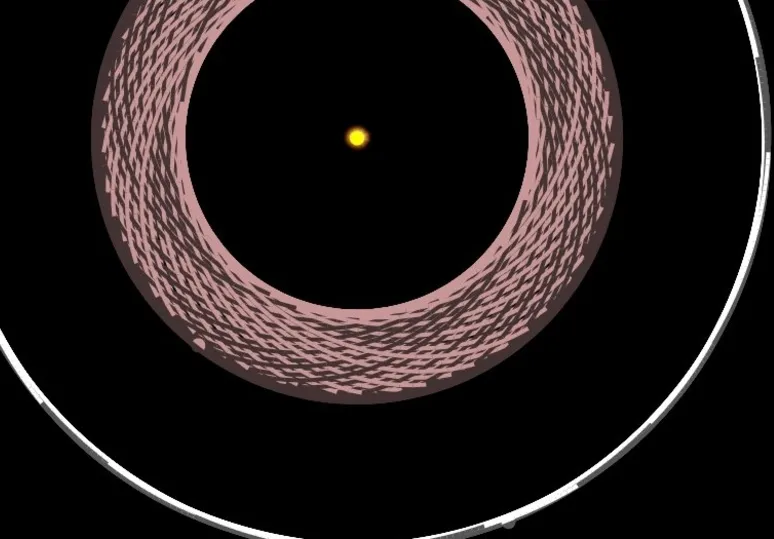Earth has another moon! The amazing 65-foot asteroid discovered by the Pan-STARRS telescope
Astronomers have discovered a new asteroid orbiting Earth that acts as our planet’s “quasi-moon”. Yes, it’s called Earth’s second moon. This asteroid, called 2023 FW13, has a unique and complex orbit that sits halfway between Mars and Venus, according to Sky & Telescope’s David Chandler.
Astronomers first spotted the asteroid on March 28 using the Pan-STARRS research telescope, located atop Haleakala, an extinct volcano in Hawaii. The Canada-France-Hawaii Telescope and the Kitt Peak National Observatory and Mount Lemon Sky Center in Arizona later confirmed its existence. The official announcement of the discovery was made in April.
The news caught the attention of Adrien Coffinet, editor of the French news site Futura – Inspirons l’avenir. Coffinet used an orbit simulator developed by amateur astronomer Tony Dunn to map the asteroid’s trajectory. His analysis revealed that 2023 FW13 shares the same orbit as Earth while orbiting our planet. Based on these findings, Covennett concluded that space rocks are likely Earth’s pseudo-impactors or pseudo-satellites.
Although 2023 FW13, which is estimated to be about 65 feet (20 meters) in diameter, follows a similar path to Earth, astronomers say the sun’s gravity has a greater effect on the asteroid. Earth’s influence on the orbit is minimal, which allows the asteroid to stay close to our planet. Each year it comes within 9 million miles (15 million kilometers) of Earth, while the Moon, the closest to Earth, is about 223,693 miles (360,000 kilometers) away.
This is not the first near-Earth asteroid of its kind. Astronomers are comparing the orbit of asteroid 2023 FW13 to the orbit of another asteroid known as Kamo’oalewa or 2016 HO3, which was also identified as a pseudosatellite in 2016. Like its predecessor, 2023 FW13 is observed in archived data dating back to . 2012. Analyzing this data, citizen astronomers have determined that the asteroid has been in our general vicinity since 100 BC. It is expected to remain so until at least 3700 AD. According to Sky & Telescope’s Chandler, if these calculations are correct, 2023 FW13 will be the largest pseudosatellite ever discovered.
Quasi-satellite 2023 FZ13 made @SkyandTelescope! https://t.co/k6SBWbG5Qo
But just a small clarification from the article. Earth’s gravity has everything to do with the longevity of this quasi-orbit. 1/n pic.twitter.com/sPgJ3mJ2F1— Tony Dunn (@tony873004) April 8, 2023




